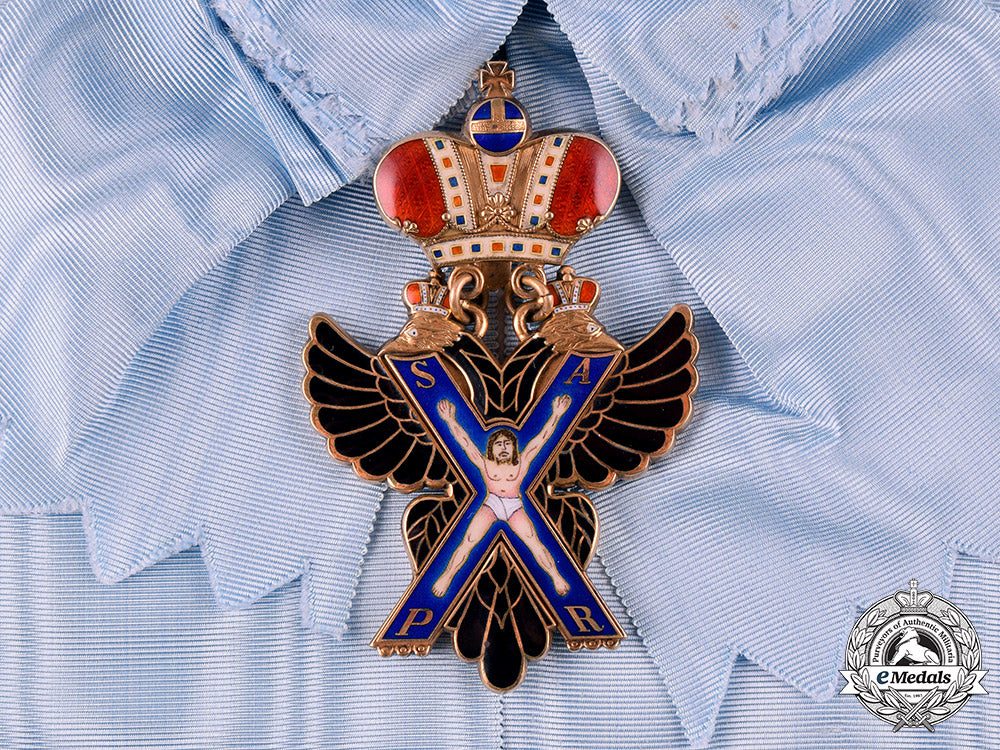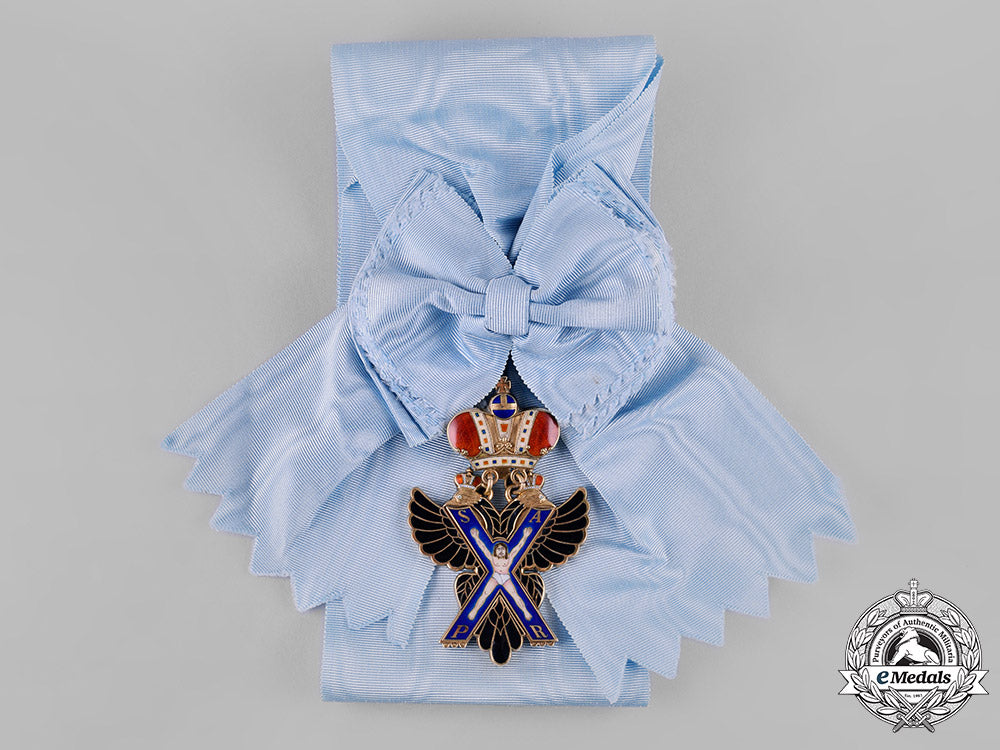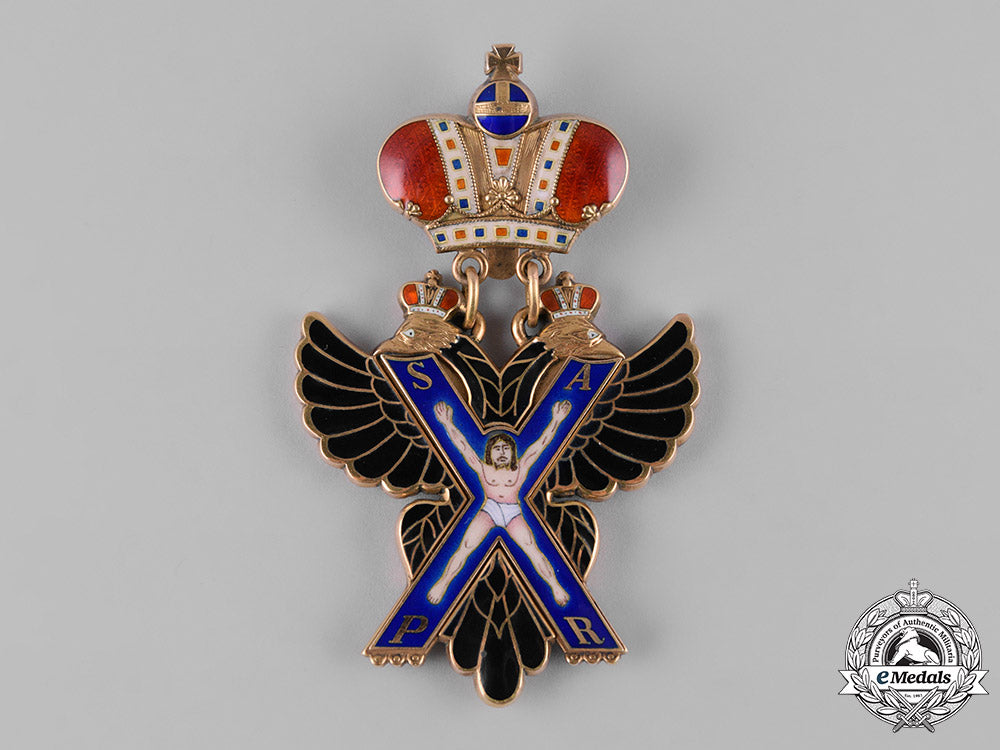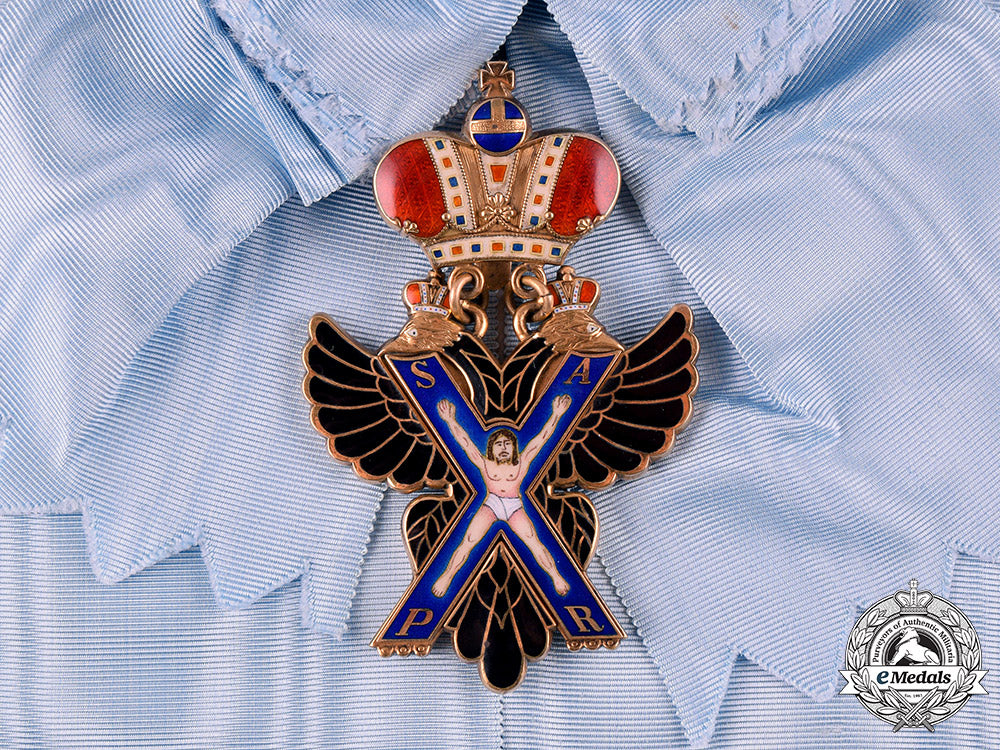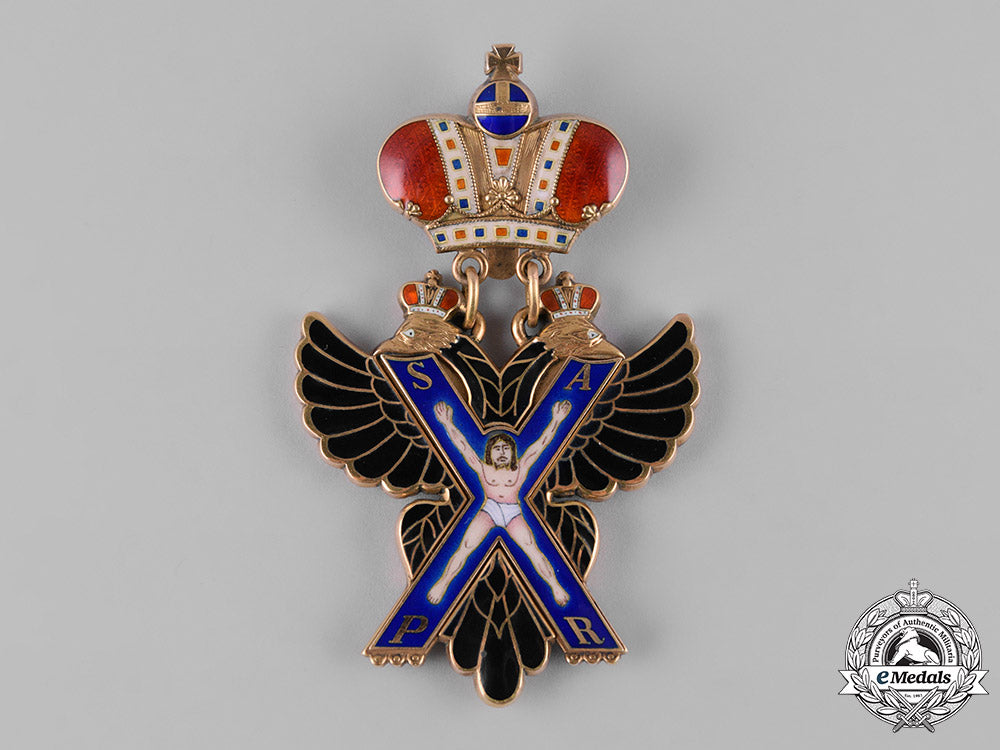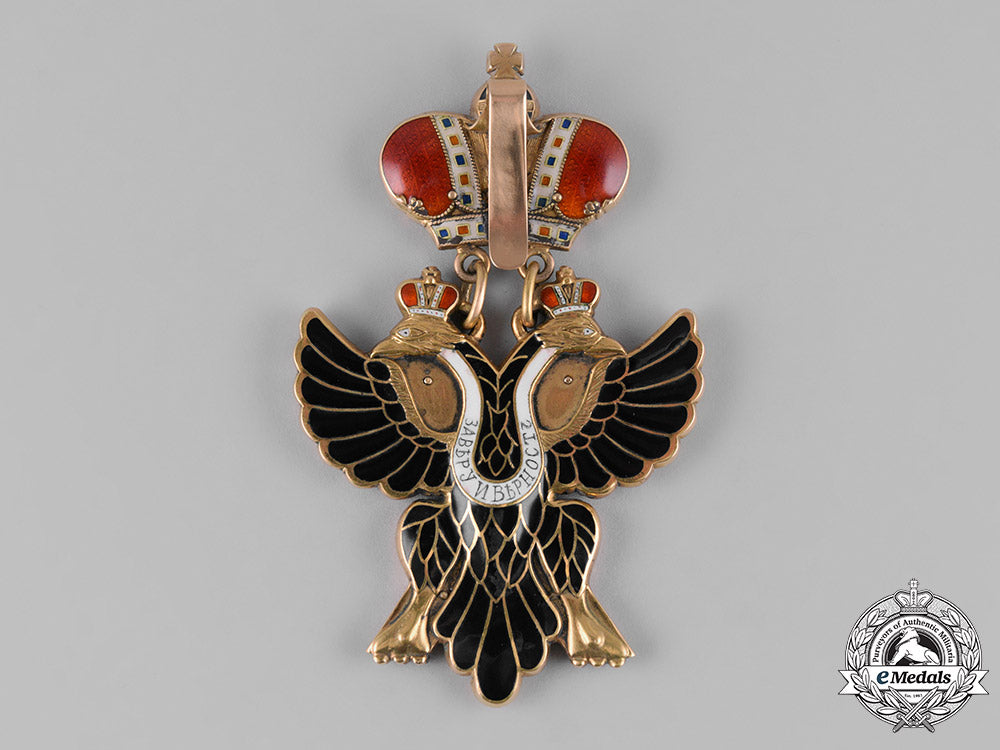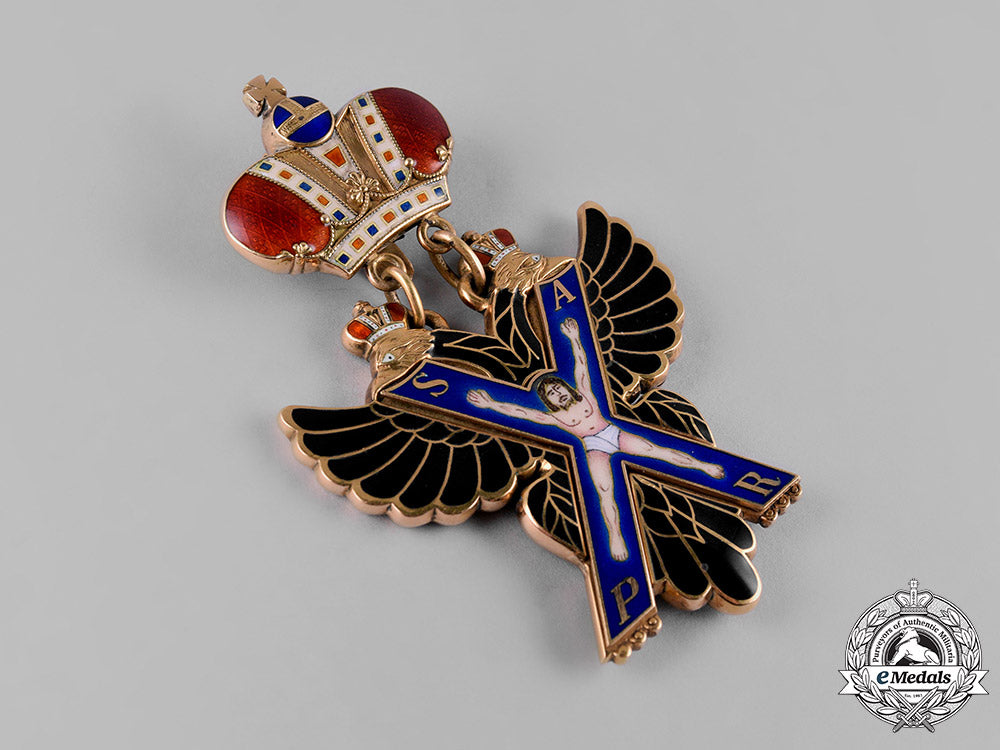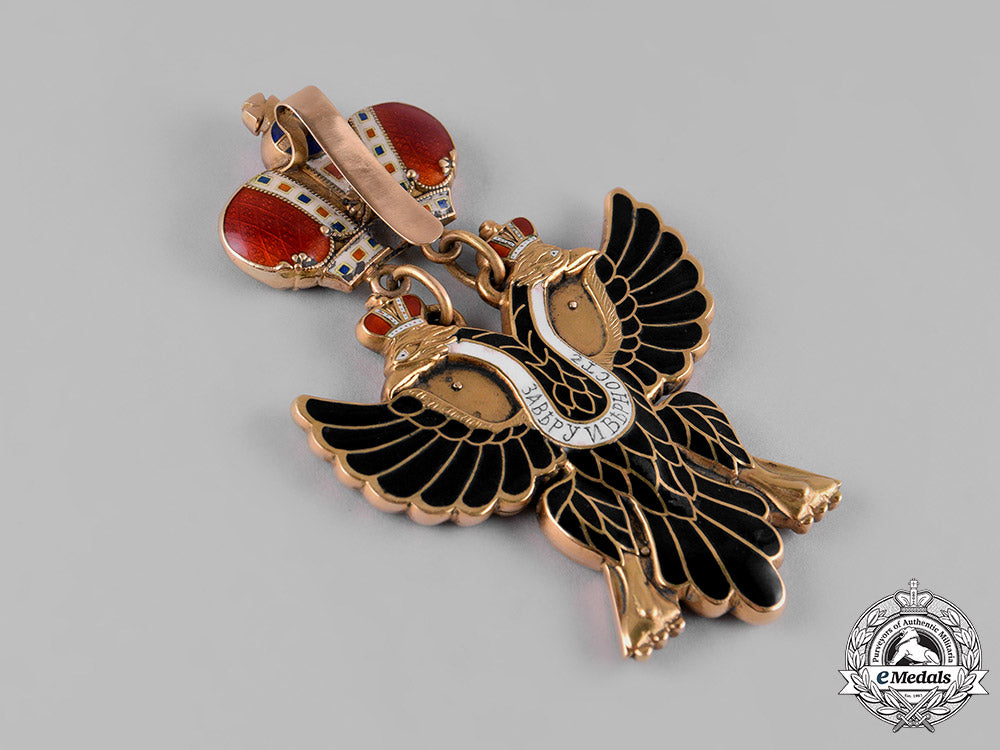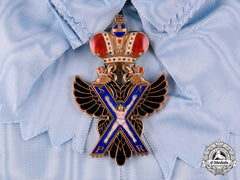
LOADING ...
In response to evolving domestic opinion, eMedals Inc has made the conscious decision to remove the presentation of German Third Reich historical artifacts from our online catalogue. For three decades, eMedals Inc has made an effort to preserve history in all its forms. As historians and researchers, we have managed sensitive articles and materials with the greatest of care and respect for their past and present social context. We acknowledge the growing sentiments put forth by the Canadian public and have taken proactive actions to address this opinion.
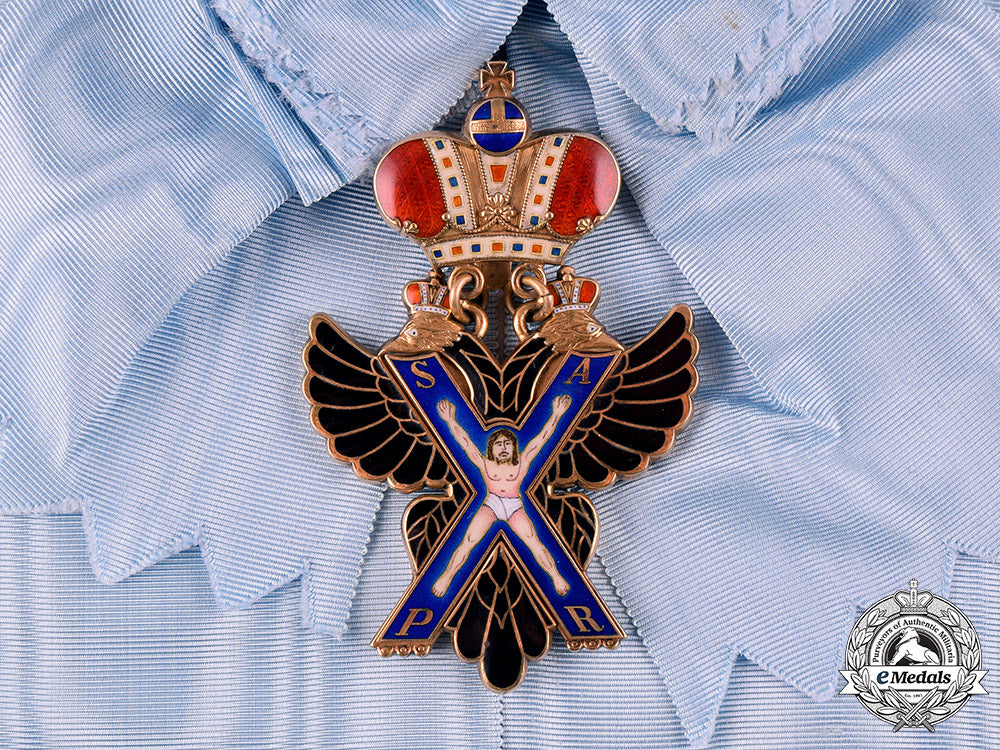
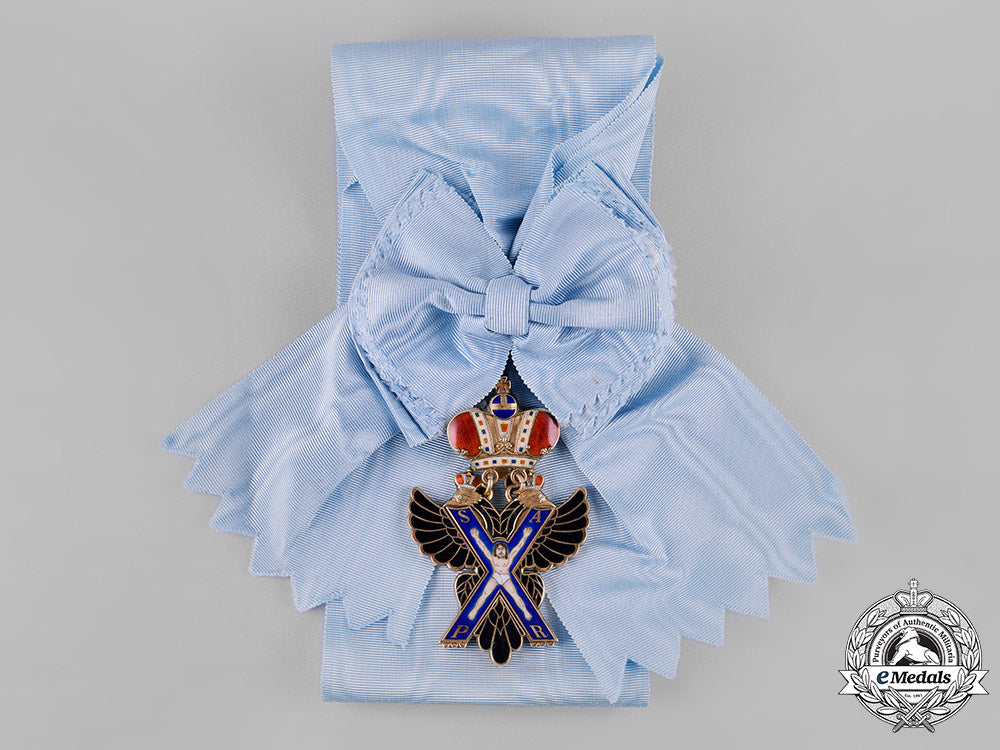
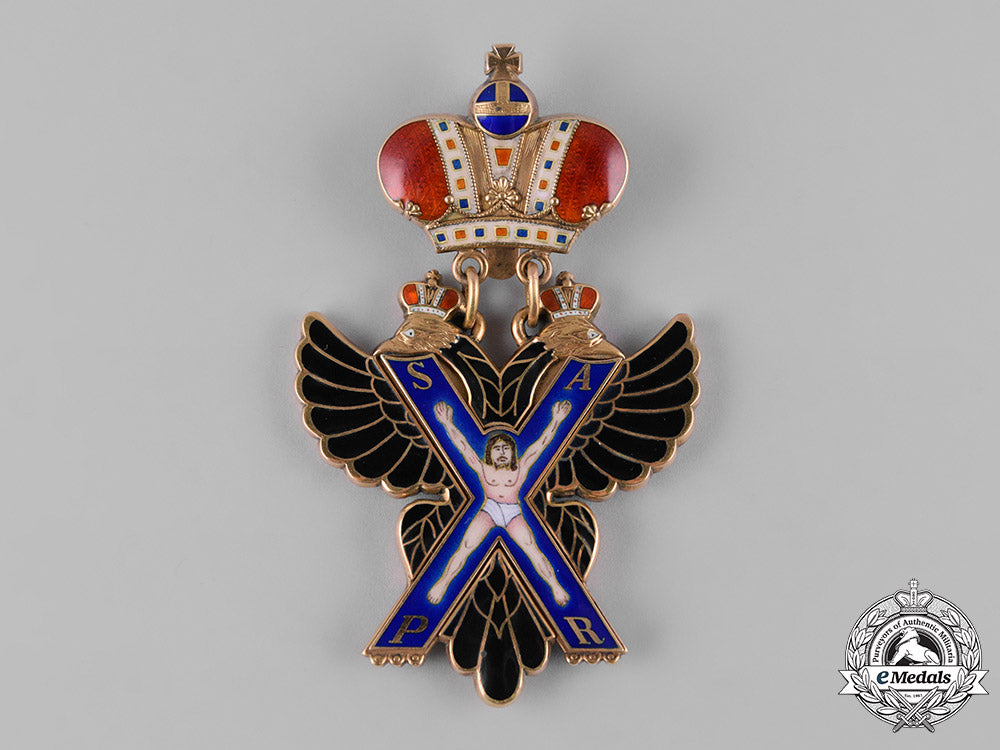
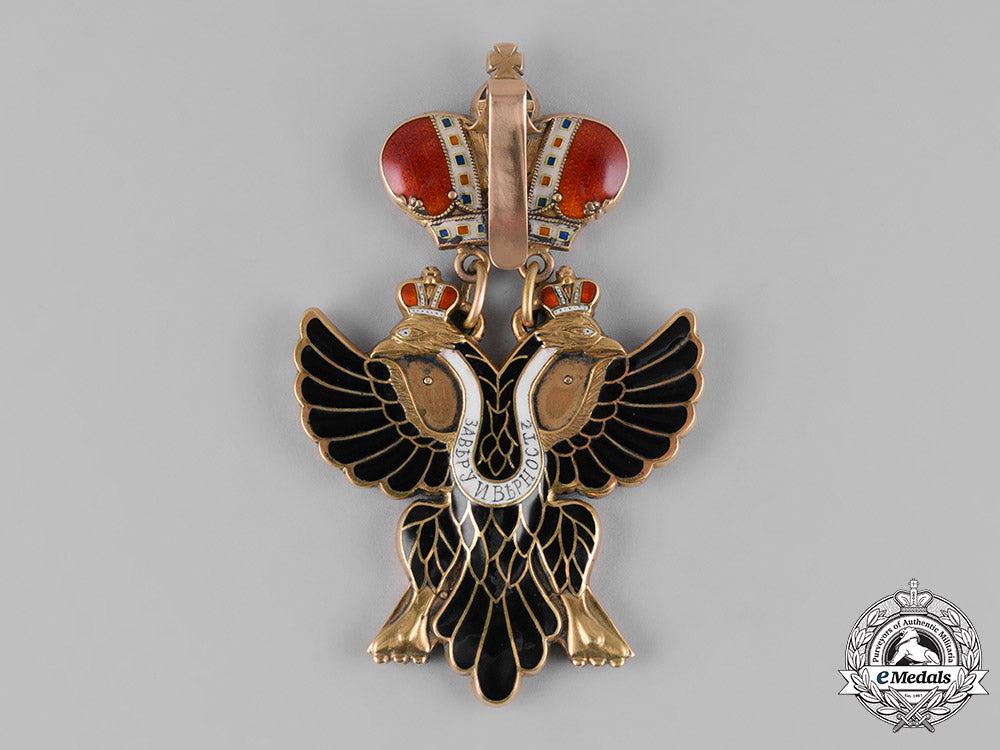
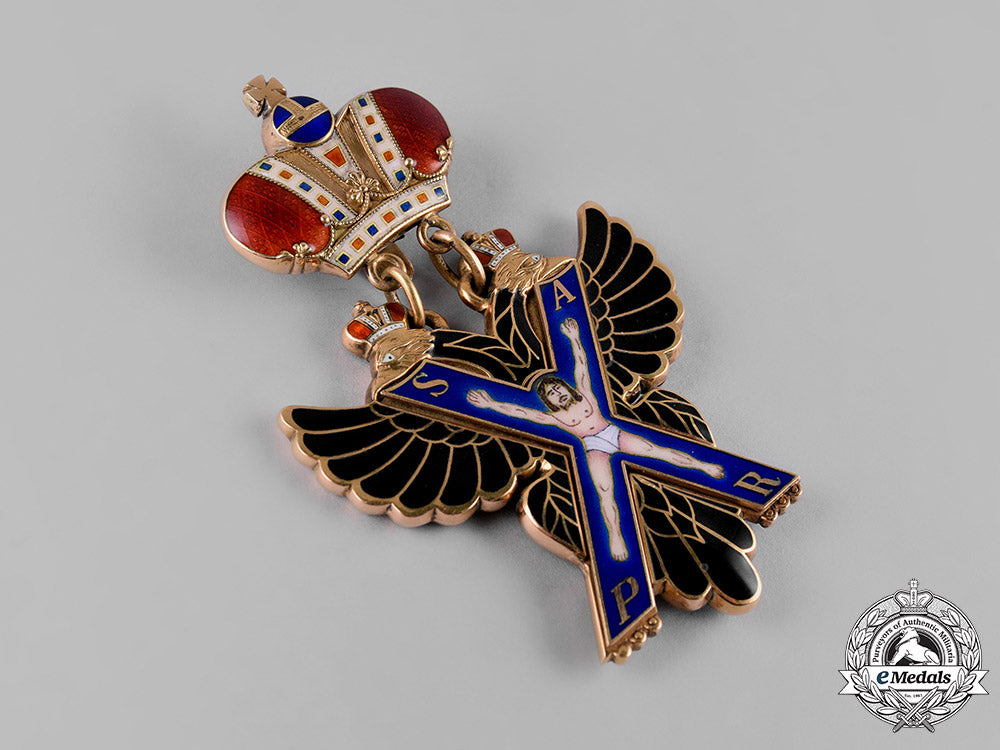
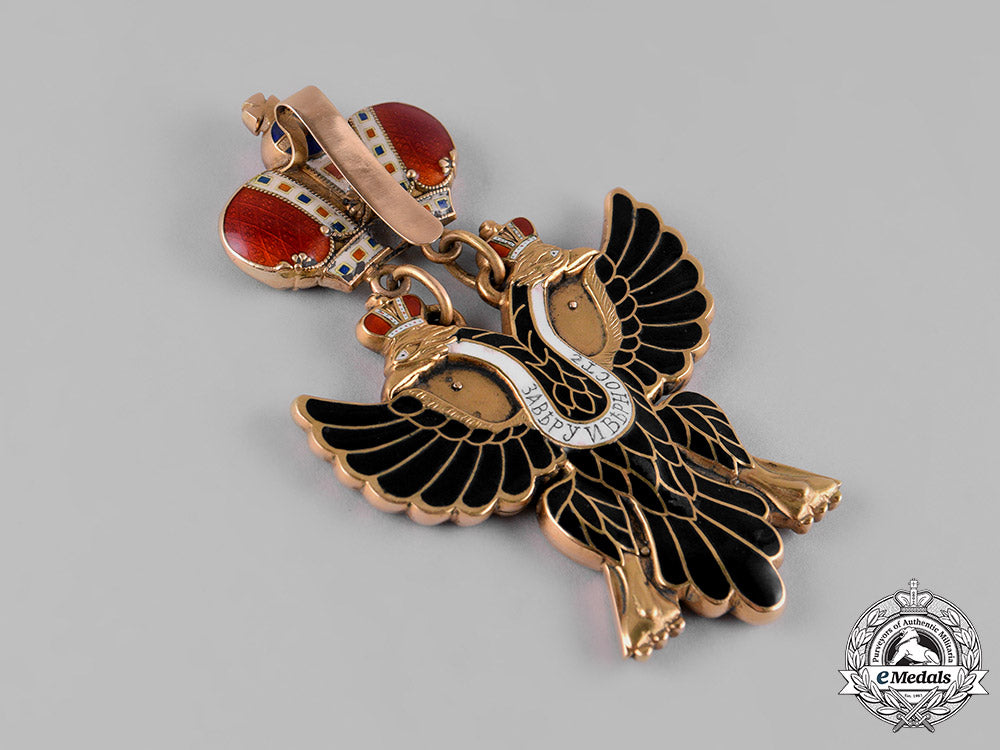
Russia, Imperial. An Order Of Saint Andrew, I Class, House Of Romanov In Exile, C.1965
Russia, Imperial. An Order Of Saint Andrew, I Class, House Of Romanov In Exile, C.1965
SKU: ITEM: EU16974
0% Buyer's Premium
Current Bid:
Your Max Bid:
Bid History:
Time Remaining:
Couldn't load pickup availability
Shipping Details
Shipping Details
eMedals offers rapid domestic and international shipping. Orders received prior to 12:00pm (EST) will be shipped on the same business day.* Orders placed on Canadian Federal holidays will be dispatched the subsequent business day. Courier tracking numbers are provided for all shipments. All items purchased from eMedals can be returned for a full monetary refund or merchandise credit, providing the criteria presented in our Terms & Conditions are met. *Please note that the addition of a COA may impact dispatch time.
Shipping Details
eMedals offers rapid domestic and international shipping. Orders received prior to 12:00pm (EST) will be shipped on the same business day.* Orders placed on Canadian Federal holidays will be dispatched the subsequent business day. Courier tracking numbers are provided for all shipments. All items purchased from eMedals can be returned for a full monetary refund or merchandise credit, providing the criteria presented in our Terms & Conditions are met. *Please note that the addition of a COA may impact dispatch time.
Description
Description
(Знак ордена Святого Андрея Первозванного). Instituted 28 November 1698. (ca. 1965 issue by the House of Romanov in Exile). Constructed of 18 carat solid Gold with multi-coloured enamels, consisting of a crowned double-headed Romanov Imperial Eagle with black enameled spread wings highlighted with Gold feathering, overlaid by a blue enameled Saint Andrew’s Cross, bearing a hand-painted image of Saint Andrew the Apostle and Latin script letters “SAPR” for “SANCTUS ANDREAS PATRONUS RUSSIAE” (“SAINT ANDREW, PATRON OF RUSSIA), the reverse continues with the fine detailing of the eagle’s feathers and presents a white enameled scroll with a black Cyrillic inscription of “ЗА ВѢРУ И ВѢРНОСТЬ” (“FOR FAITH AND LOYALTY”), with two visible rivets holding the obverse features in place, the eagles’ heads with dual integral loops and suspension rings connecting to an intricate Gold and enameled crown, the reverse with a clip connecting to the badge’s period original sash ribbon, measuring 815 mm in length, the badge unmarked and measuring 58.12 mm (w) x 62.04 mm (h), the crown measuring 35.79 mm (w) x 30.71 mm (h), with a total weight of 72.2 grams, in extremely fine condition.
Historical Footnote: The Order of Saint Andrew the First-Called was established by Tsar Peter I (Peter the Great) on 30 August 1698, following his return to Russia from a seventeen month diplomatic and fact-finding mission to Western Europe. Enticed by the latter’s preponderance of bejewelled imperial orders, Peter viewed a transition away from the habit of Russian rulers of rewarding bravery and service with estates and gold coins to a system of such orders as a way to bolster his efforts to Europeanise Russia. The Order of Saint Andrew became Imperial Russia’s premier imperial order, and was first bestowed on Fyodor Alekseyevich Golovin on 10 March 1699. Appropriately for its rank and esteem, the Order was awarded to less than one thousand non-royal individuals in the period between its establishment and elimination following the Russian Revolution of 1917 (Peter himself awarded the Order only 38 times). It was automatically awarded to Grand Dukes upon baptism into the Russian Orthodox Church, and to Princes of the Blood upon reaching the age of majority. After Russia expanded its system of orders, both royal and non-royal recipients automatically became Knights of the Order of Saint Alexander Nevsky, the Order of the White Eagle, the Order of Saint Anne, and the Order of Saint Stanislaus. As an award with patronage of the Russian Orthodox Church, on the Feast Day of Saint Andrew (30 November), an annual Liturgy was held in Saint Andrew’s Cathedral on Vasilievsky Island, which bearers of the order were expected to attend. Prophetically, during the coronation of Tsar Nicholas II, the badge of his Order came loose from its collar and fell to the ground; observers at the time speculated that this was a bad omen for his impending reign. Although the award was abolished in 1917 by the Revolutionary government, it continued to be awarded by members of the House of Romanov in exile, with the first such award presented by Prince Gregory Konstantinovich in April 1923.
Description
(Знак ордена Святого Андрея Первозванного). Instituted 28 November 1698. (ca. 1965 issue by the House of Romanov in Exile). Constructed of 18 carat solid Gold with multi-coloured enamels, consisting of a crowned double-headed Romanov Imperial Eagle with black enameled spread wings highlighted with Gold feathering, overlaid by a blue enameled Saint Andrew’s Cross, bearing a hand-painted image of Saint Andrew the Apostle and Latin script letters “SAPR” for “SANCTUS ANDREAS PATRONUS RUSSIAE” (“SAINT ANDREW, PATRON OF RUSSIA), the reverse continues with the fine detailing of the eagle’s feathers and presents a white enameled scroll with a black Cyrillic inscription of “ЗА ВѢРУ И ВѢРНОСТЬ” (“FOR FAITH AND LOYALTY”), with two visible rivets holding the obverse features in place, the eagles’ heads with dual integral loops and suspension rings connecting to an intricate Gold and enameled crown, the reverse with a clip connecting to the badge’s period original sash ribbon, measuring 815 mm in length, the badge unmarked and measuring 58.12 mm (w) x 62.04 mm (h), the crown measuring 35.79 mm (w) x 30.71 mm (h), with a total weight of 72.2 grams, in extremely fine condition.
Historical Footnote: The Order of Saint Andrew the First-Called was established by Tsar Peter I (Peter the Great) on 30 August 1698, following his return to Russia from a seventeen month diplomatic and fact-finding mission to Western Europe. Enticed by the latter’s preponderance of bejewelled imperial orders, Peter viewed a transition away from the habit of Russian rulers of rewarding bravery and service with estates and gold coins to a system of such orders as a way to bolster his efforts to Europeanise Russia. The Order of Saint Andrew became Imperial Russia’s premier imperial order, and was first bestowed on Fyodor Alekseyevich Golovin on 10 March 1699. Appropriately for its rank and esteem, the Order was awarded to less than one thousand non-royal individuals in the period between its establishment and elimination following the Russian Revolution of 1917 (Peter himself awarded the Order only 38 times). It was automatically awarded to Grand Dukes upon baptism into the Russian Orthodox Church, and to Princes of the Blood upon reaching the age of majority. After Russia expanded its system of orders, both royal and non-royal recipients automatically became Knights of the Order of Saint Alexander Nevsky, the Order of the White Eagle, the Order of Saint Anne, and the Order of Saint Stanislaus. As an award with patronage of the Russian Orthodox Church, on the Feast Day of Saint Andrew (30 November), an annual Liturgy was held in Saint Andrew’s Cathedral on Vasilievsky Island, which bearers of the order were expected to attend. Prophetically, during the coronation of Tsar Nicholas II, the badge of his Order came loose from its collar and fell to the ground; observers at the time speculated that this was a bad omen for his impending reign. Although the award was abolished in 1917 by the Revolutionary government, it continued to be awarded by members of the House of Romanov in exile, with the first such award presented by Prince Gregory Konstantinovich in April 1923.



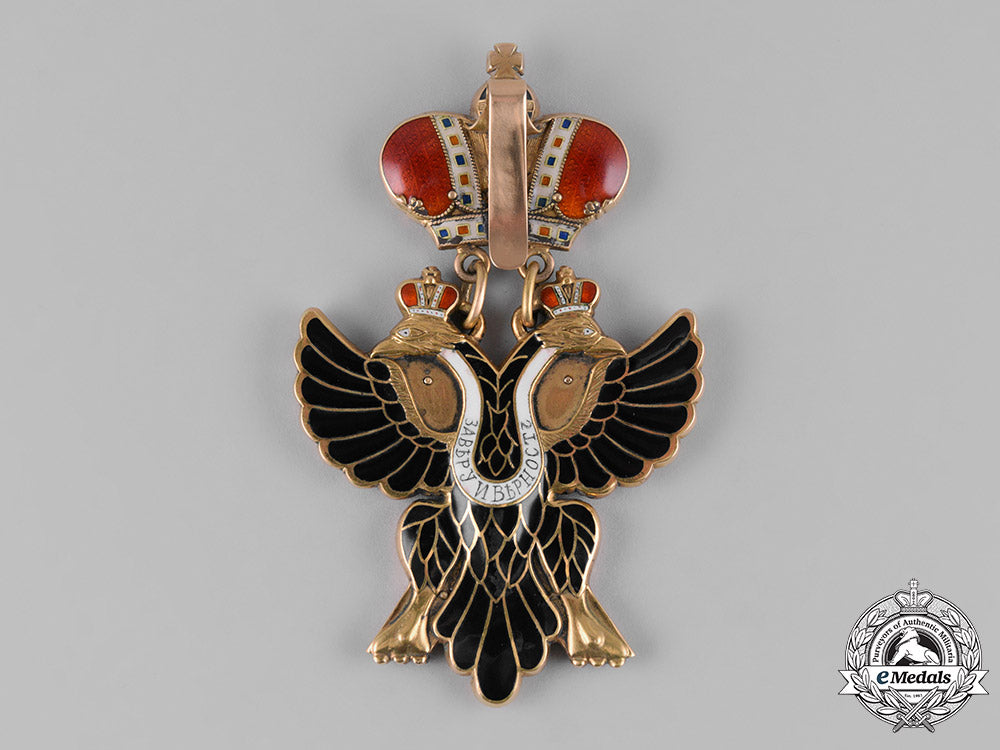


You May Also Like
Germany, Third Reich. A Mixed Lot of Tyrolean Marksmanship Badges
G52930
Germany, SS. An Estonian Waffen-SS Volunteer’s Sleeve Shield
G50381
Germany, SS. A Waffen-SS Sturmmann Sleeve Insignia
G52846
Germany, Third Reich; Slovakia, First Republic. A Mixed Lot of Wartime Postcards
G52905
Germany, Third Reich. A Pair of Tyrolean Marksmanship Badges
G52981
-
Germany, Third Reich. A Mixed Lot of Tyrolean Marksmanship Badges
G52930
Add to CartRegular price $135 USDRegular price $0 USD Sale price $135 USDUnit price / per -
Germany, SS. An Estonian Waffen-SS Volunteer’s Sleeve Shield
G50381
Add to CartRegular price $150 USDRegular price $0 USD Sale price $150 USDUnit price / per -
Germany, SS. A Waffen-SS Sturmmann Sleeve Insignia
G52846
Add to CartRegular price $135 USDRegular price $0 USD Sale price $135 USDUnit price / per -
Germany, Third Reich; Slovakia, First Republic. A Mixed Lot of Wartime Postcards
G52905
Add to CartRegular price $135 USDRegular price $0 USD Sale price $135 USDUnit price / per -
Germany, Third Reich. A Pair of Tyrolean Marksmanship Badges
G52981
Add to CartRegular price $135 USDRegular price $0 USD Sale price $135 USDUnit price / per
Do you have a similar item you are interested in selling?
Please complete the form and our client care representatives will contact you.
Sell Item